If you have living plants in your aquarium, you’ll probably know that they need CO2 to help them thrive. That’s because around 40% of a plant is made up of carbon. However, if CO2 levels in the water are too high, that will be detrimental for your fish. So, a delicate balance must be struck that suits both parties.
In this guide, we discuss how to increase the levels of CO2 in the aquarium without harming your fish. We also look at the signs of too much CO2 in the aquarium. Importantly, we explain how to test CO2 levels in the aquarium and maintain them at a healthy level for plants, using our handy CO2 dosing chart.
Did you know that adding CO2 to your tank can change the pH levels and the hardness of the water, potentially making the parameters unsuitable for some fish species? No problem! Our CO2, pH, KH chart enables you to see at a glance what effect adding more CO2 to your tank will have on the water conditions.
Importance of CO2 in your Aquarium
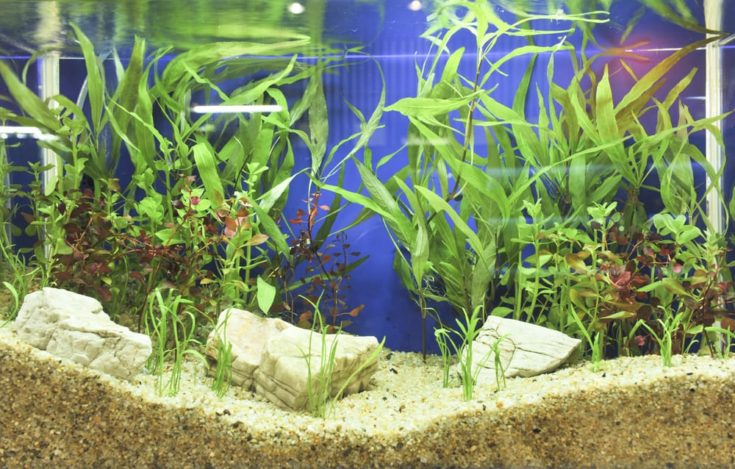
Carbon dioxide (CO2) is used by aquatic plants, together with micro and macronutrients and light, to create the nutrients that they require to grow and flourish. Plants generate energy through the process of photosynthesis, during which light binds CO2 with water to produce sugar that provides nutrition for the plant.
During the daytime, when photosynthesis takes place, the plant releases oxygen (O2), which is used by the fish and other creatures in your aquarium. At night, when no light is available, the plant respires in reverse, producing CO2 and using oxygen.
CO2 Above and Below the Waterline
Surface plants can derive all the CO2 they need from the air, where the CO2 content is around 400 ppm (parts per million). Therefore, CO2 is always available in constant, sufficient amounts for floating aquarium plants. However, underwater, that’s not the case. Because of the partial pressure gradient to the air, the CO2 levels in water drop to around 2 to 4 mg/l, which is not sufficient for submerged aquatic plants to thrive.
CO2 in the Aquarium
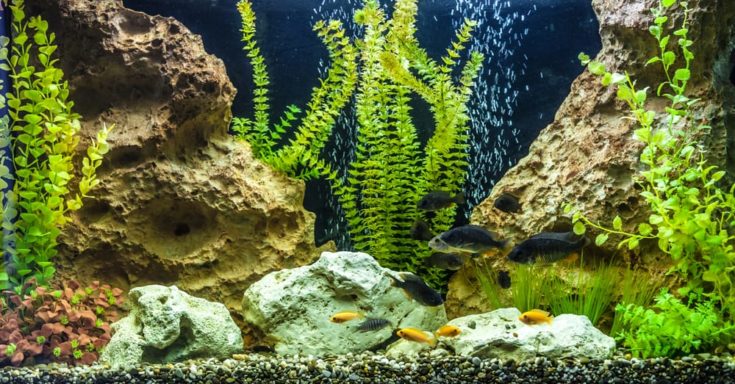
In the home aquarium, there is usually a lack of essential CO2 for certain species of plants, and that can only be boosted by supplying CO2 artificially via a CO2 system. However, certain species of plants can thrive in the home tank without CO2 supplementation.
For example, certain slow-growing, low-light species of plants, such as various ferns, Anubias, and Cryptocoryne, can survive and flourish solely by utilizing the CO2 that’s produced by the bacteria, fish, and other livestock in the aquarium.
How to Measure Level of CO2 in an Aquarium
Adding CO2 to the aquarium via a gas injection system is a very popular and effective method of increasing carbon levels in the water. That’s great for your plants, but CO2 is highly toxic when overdosed and can be fatal to fish and invertebrates. So, it’s crucial that you regularly monitor and test the levels of gas in the water.
Safe Levels of CO2
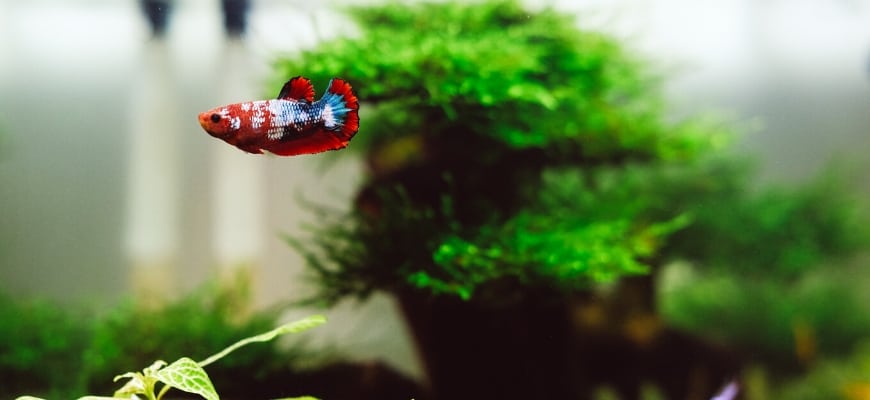
Most fish and invertebrate species can live comfortably and safely in water that has a CO2 content of 30 ppm (mg/l). However, that toxicity threshold can change drastically, depending on the levels of dissolved oxygen in the water. In tanks where the levels of oxygen are low, the fish are more sensitive to the toxic effects of CO2. Conversely, in water with high levels of dissolved oxygen, the safe threshold of CO2 is increased.
The recommended safe level of CO2 for aquatic livestock is under 32 ppm.
Gas Toxicity
If you take your eye off the ball and allow the CO2 levels in your aquarium to become too high, the concentration of carbon dioxide in the water becomes toxic to your livestock. Symptoms to watch out for include:
- Lethargy
- Poor appetite
- Losing consciousness
- Gasping at the surface
The quickest and most effective way to save your fish is to reduce the CO2 levels in the water by carrying out a large water change right away. Make sure that the new water is dechlorinated and at the same temperature as that in the tank to reduce further stress or temperature shock to the fish. You can also add an air stone and agitate the water surface, but a super-quick water change is more effective.
Nighttime Danger
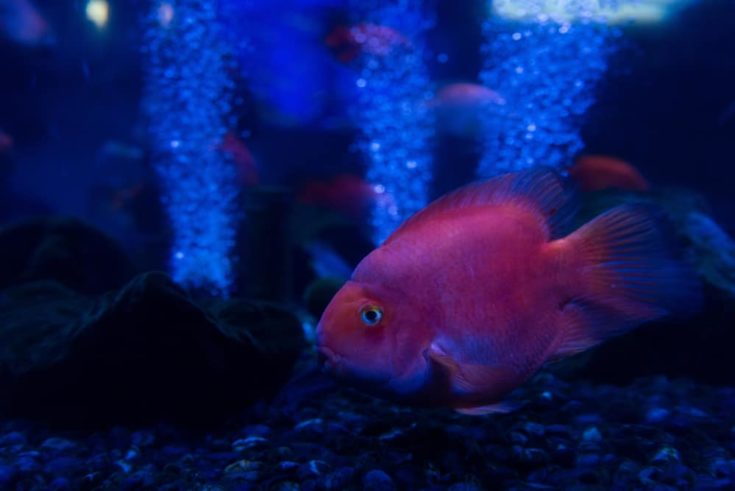
The most common time for fish to experience CO2 intoxication is at night when the plants use oxygen and produce CO2, further adding to the toxicity within the tank. For that reason, I recommend that you turn off your CO2 injection system right before lights-out. It’s also effective to set your system to come on an hour in advance of your lights. That allows CO2 levels to accumulate, giving the plants a boosted start to their photosynthesis period.
It’s also important to know that some CO2 kits inject a disproportionate quantity of gas into the water right before the cylinder is empty, and you can avoid that happening by changing the cylinder before the gas level gets very low.
The pH/KH/CO2 Relationship
When carbon dioxide gas is dissolved in water, carbonic acid is produced that causes the water to become more acidic, decreasing the pH. It’s that basic chemistry that enables us to work out roughly how much CO2 is present in the water. Another critical element of the water chemistry in your tank is the carbonate hardness (KH), or alkalinity, which denotes the pH buffering ability of the water. Basically, hard water has a high buffering capability and vice versa.
The following table illustrates the basic relationship between carbon dioxide levels and their effect on pH and KH in water. You can use this table to test your tank’s pH versus the CO2 level, which should ideally be within the green band.
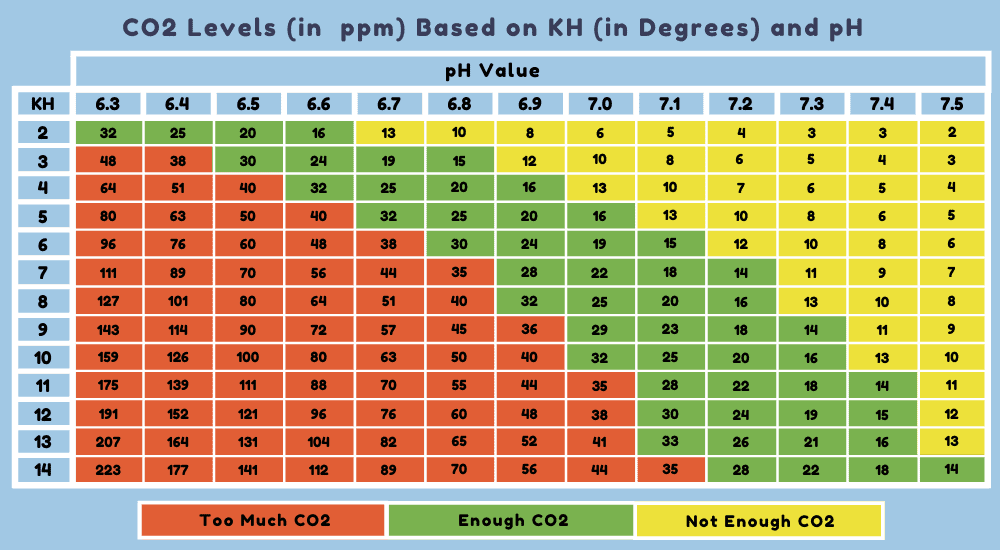
For example, assuming the water has a pH level of 6.6, measuring 4 KH. Check the table at the point where the pH and KH lines intersect to give you the CO2 level, which in this example is 32 ppm.
Testing the water in your aquarium is fraught with potential errors. Sometimes, test kits are inaccurate, and you may incorrectly interpret the results of liquid pH test kits, or make an error when counting the number of test kit drops you’ve used in the test. The smallest mistake can result in the readings being over or under. In the case of CO2, a reading that’s way out could mean water that’s lethal to your fish.
The relationship between pH, KH, and CO2 assumes that only carbonic acid is produced by dissolving CO2 in the tank water. However, organic matter, humic acids, and nitric acids can also finish up in the mix, reducing pH readings, and skewing the CO2 calculation result.
Drop Checkers
A more accurate method of CO2 monitoring that’s been around for many years is using drop checkers.
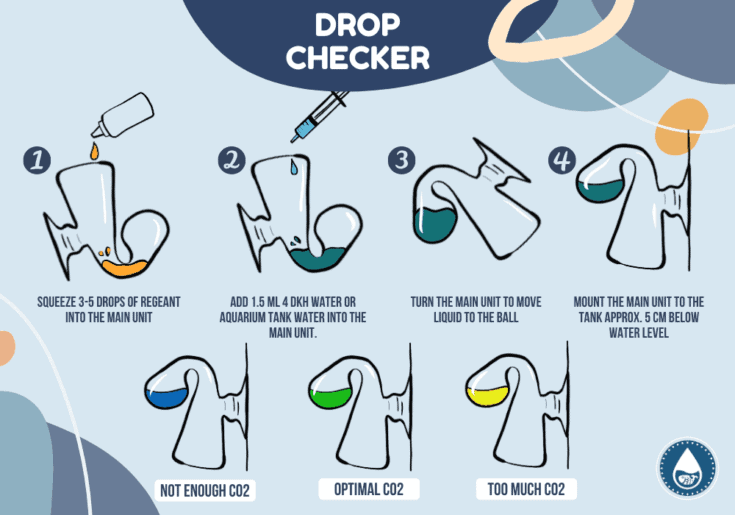
Drop checkers are essentially tubes that you fill with a solution of a pH reagent called bromothymol blue and water. The gas in the water reacts with the bromothymol blue and water solution, causing it to change color:
- Dark blue indicates a high pH/low CO2 (too little CO2)
- Yellow indicates a low pH/high CO2 (too much CO2)
- Green indicates the correct amount of CO2 for your plants, which is also safe for your fish
Types of Drop Checkers
Drop checkers come in an assortment of shapes and sizes and may be made from plastic or glass. The same principle is used by every drop checker, regardless of its design. The drop checker holds a small quantity of pH reagent and water in a solution that changes color, depending on the level of CO2 that’s present in the solution.
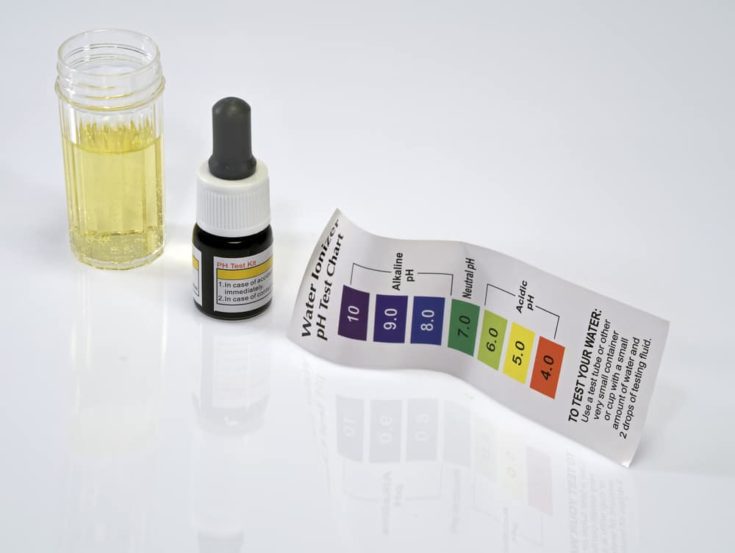
You can either buy a pH/KH solution that can be added directly to the drop checker, but it’s easy to make up your own. All you need is a low-range pH test kit, which also contains a color chart that you’ll need to compare your drop checker color with the ideal pH level indicated on the chart.
How to Use a Drop Checker
To use the drop checker, fill it with water of chemistry that’s already known. In the case of the example above, we know that the water has a KH of 4o. Use a standard low-range pH test kit, and you will see that a pH of 6.6 is represented by a lime green color.
We also know that a pH of 6.6 with 4 KH equates to a CO2 level of 32 ppm. So, if we aim for that same lime green color in the drop checker, we know that we should get CO2 saturation of around 32 ppm. If the coloration is bluer than lime green, that means there’s less than 30 ppm CO2, and if the solution turns yellow, we know that there’s more than 30 ppm CO2.
Accuracy of Drop Checkers
The solution in the drop checker is kept separate from the tank water by an air space. Therefore, the only influence on the pH is from the CO2. That makes the drop checker test more accurate than using the standard test kits and pH/KH/CO2 table alone.
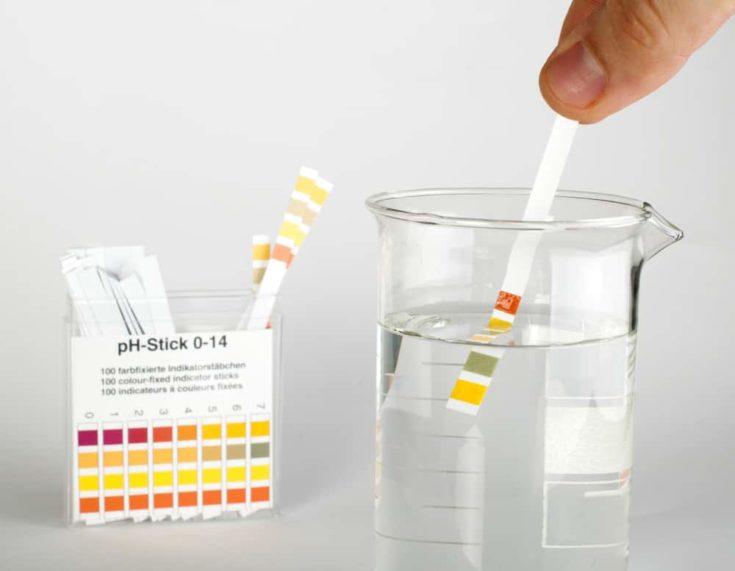
Downsides of Drop Checkers
There are a few downsides to using a drop checker.
The solution within the drop checker may take a few hours to react and change color, which could be potentially misleading, and consequently, you may add more carbon dioxide gas than is required. Essentially, the larger the air space between the tank water and the solution in the drop checker, the longer the reaction will take.
Also, you need to use a color chart to interpret the test results, and that can be misinterpreted. I would advise that you err on the side of caution and aim for a darker green, rather than a more yellowish-green color. If you have a very large tank, you may want to use more than one drop checker to make sure that the CO2 levels are evenly distributed around your setup.
With smaller tanks, it’s useful to move the drop checker around so that you can determine the carbon dioxide levels at different parts of the setup, particularly if you’re running a high-energy system that requires very specific CO2 level requirements.
Plant Growth and CO2 Requirements
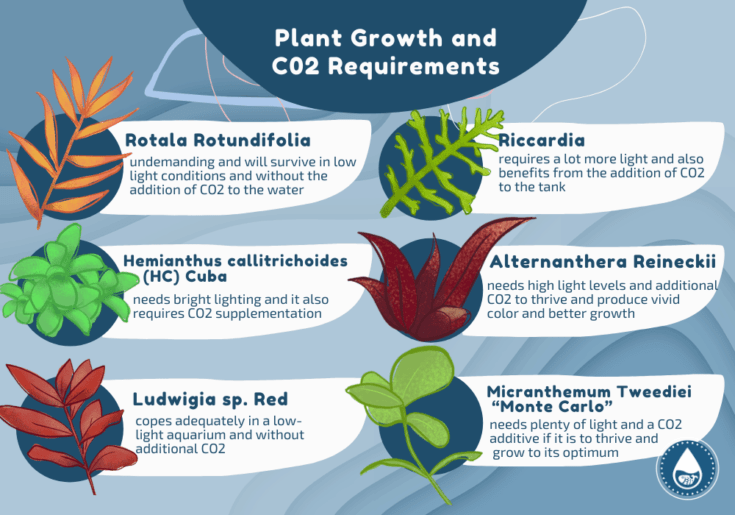
As previously mentioned, most plant species that are suitable to be grown in low-tech setups don’t need CO2 supplementation to thrive, as long as their light requirements are met.
However, as a general rule of thumb, plants that are described as medium to advanced in terms of their care requirements will benefit from additional carbon dioxide in the water.
Here are a few examples of popular aquatic plants that need an extra CO2 boost to thrive and grow, as well as a few that will flourish without it. When choosing plants for your setup, be sure to pick species that have similar nutritional requirements so that every specimen gets exactly what it needs for optimum growth.
Hemianthus Callitrichoides (HC) Cuba
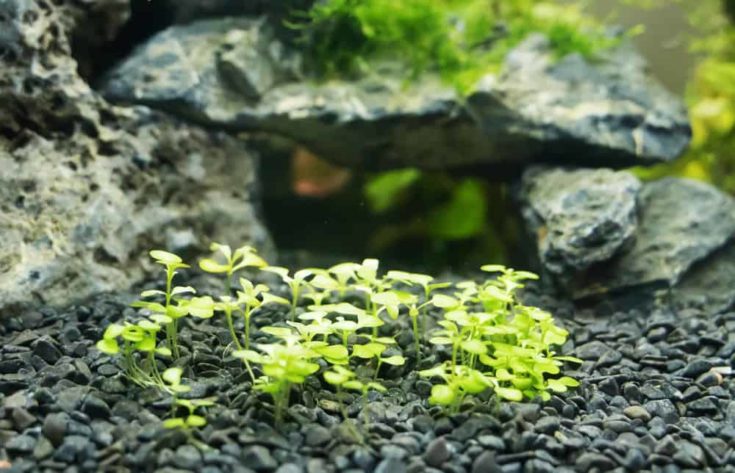
Hemianthus Callitrichoides is more often sold as HC Cuba. This is a popular plant with aquascaping enthusiasts because of the vibrant, thick carpet effect that it creates over the floor of the aquarium.
However, HC Cuba also has the reputation of being a very difficult plant species to grow successfully, largely because it is so demanding in terms of the nutrition it needs to thrive. The plant needs bright lighting, which is not easily achieved in a deep tank, and it also requires CO2 supplementation.
Rotala Rotundifolia
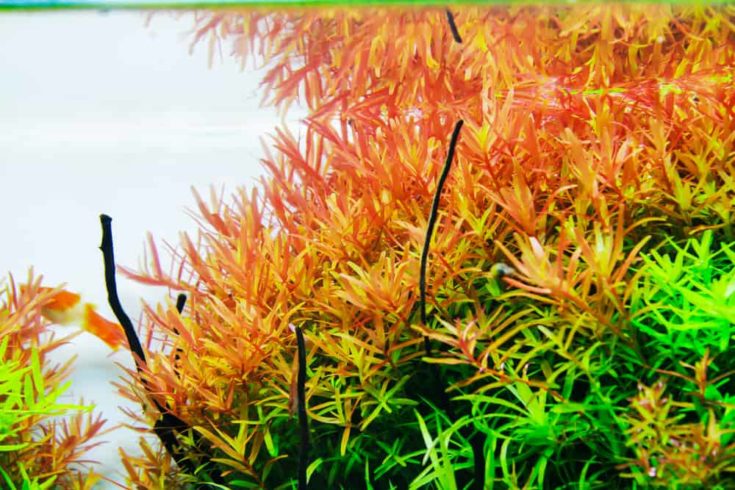
In contrast, Rotala Rotundifolia is a plant that can be used to good effect in the midground and foreground of the aquarium.
This species is undemanding and will survive happily in low light conditions and without the addition of CO2 to the water.
Ludwigia sp. Red
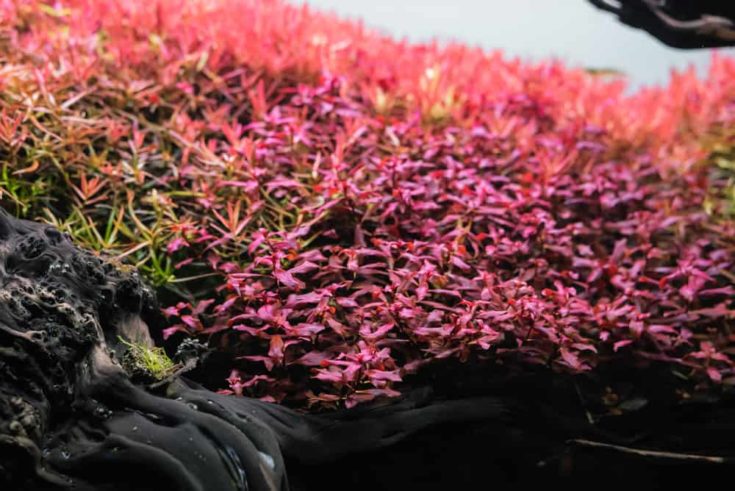
Ludwigia sp. Red is a beautiful tropical aquatic plant that has distinctive pinkish-red leaves and stems, which makes an excellent choice for a mid-ground plant. Although the plant will cope adequately in a low-light aquarium and without additional CO2, its color will be more intense, and its growth rate will increase if you give the plant brighter light conditions and additional CO2.
Alternanthera Reineckii
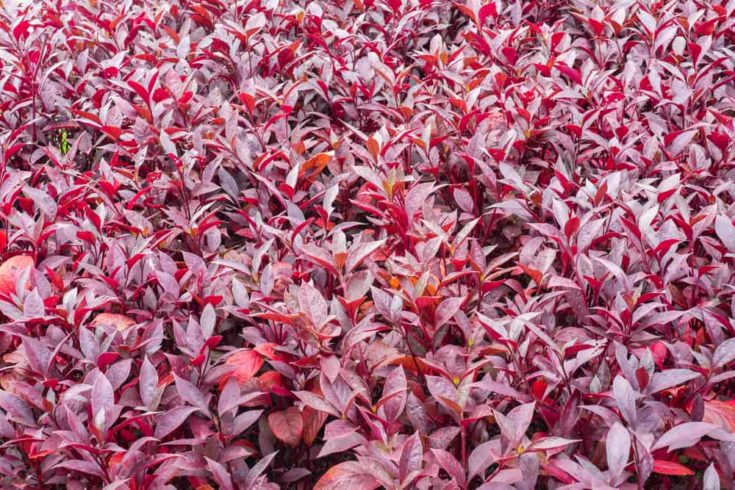
Alternanthera Reineckii is another red plant that can be carefully trimmed and cultivated to make a spectacular deep red-violet carpet in the aquarium. Like many red-leaved species, this plant needs high light levels and additional CO2 to thrive and produce vivid color and better growth.
Micranthemum Tweediei “Monte Carlo”
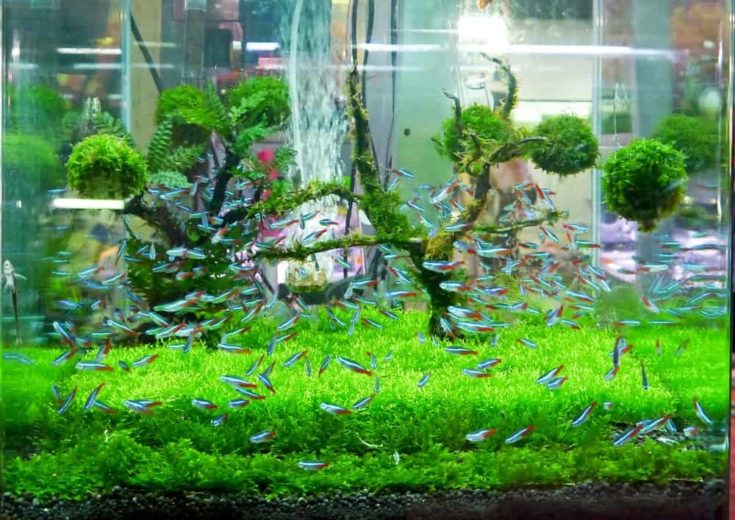
Monte Carlo is a low-growing carpet species that is popular with aquascapers for its fresh, light green leaves and rapid growth rate. That said, this plant does need plenty of light and a CO2 additive if it is to thrive and grow to its optimum.
Riccardia
Riccardia is an Asiatic species of liverwort that’s also known in the hobby as Coral Moss. The plant is an intense, dark green color and grows across rocks and wood in the aquarium. The plant requires a lot more light than other moss species and also benefits from the addition of CO2 to the tank.
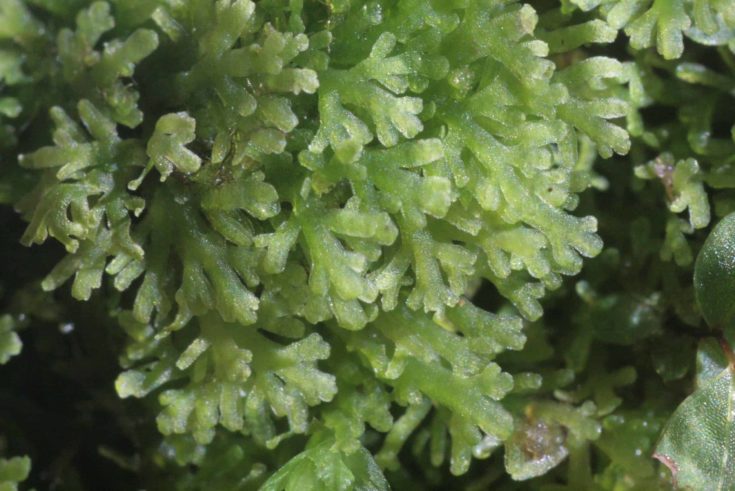
Conclusion
I hope you enjoyed my guide to CO2 in the planted aquarium.
Living plants need carbon to photosynthesize, and without it, they cannot absorb the nutrients that they need to flourish and thrive. CO2 can be added to the aquarium through the use of liquid fertilizer or a CO2 gas infusor kit.
However, although your plants will certainly enjoy supercharged growth and increased depth of color if you feed them extra carbon dioxide, too much of the gas in the water is potentially toxic to your fish. For that reason, you must carefully monitor CO2 levels by testing the water regularly using a drop checker.
When choosing plants for your tank, always check to make sure that the species you pick all have similar lighting and CO2 requirements.
Share your experiences of using CO2 in your planted tank, and don’t forget to share this guide if you enjoyed it.
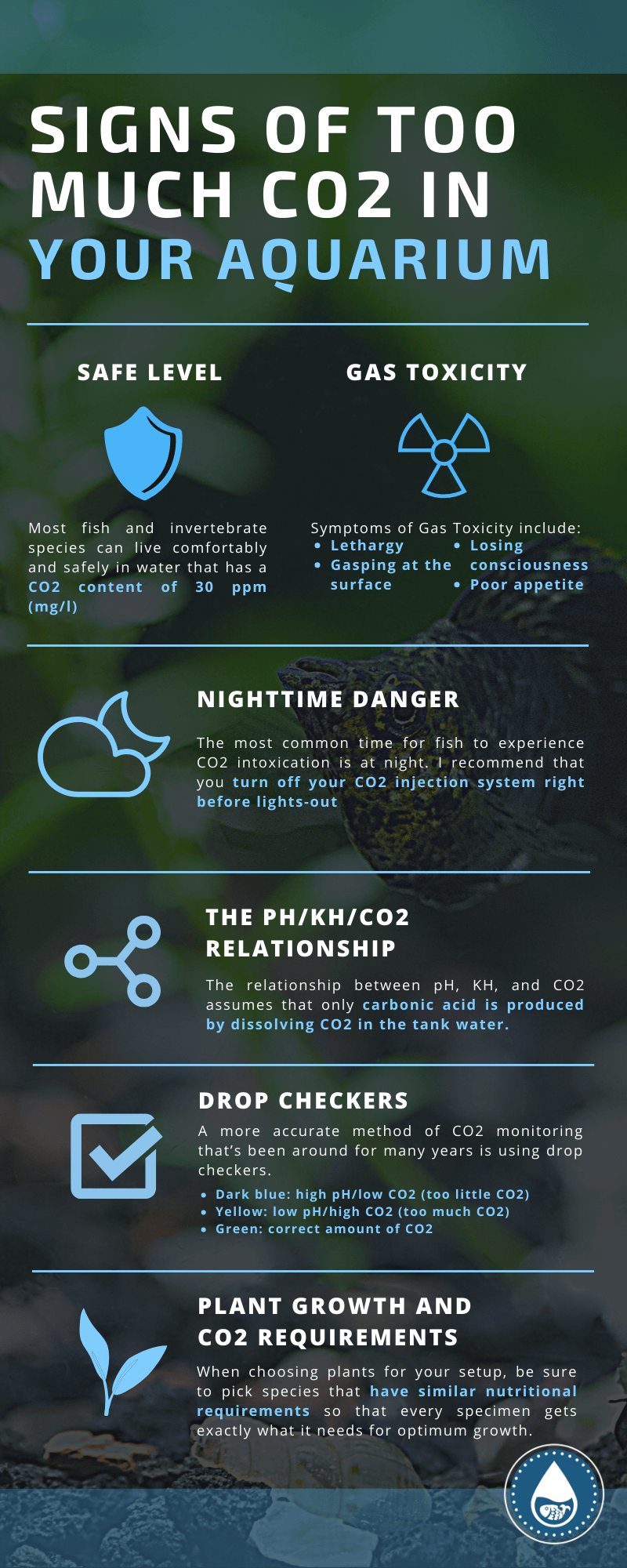
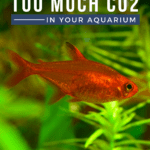
Hello. Informative article, but your CO2 chart is incorrect. Low ppm of CO2 indicates not enough CO2, and vise versa. Cheers.
Thank you. We fixed it.
Very helpful. Thank you.
Great article! Discontinued CO2 supplementation and decided to use it again. Great refresher for me and easily understood.
Thanks, Dan Sethner